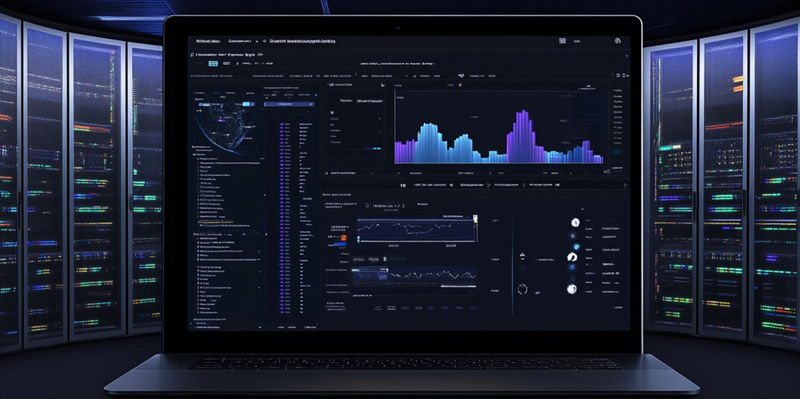In the rapidly evolving landscape of data management, enterprises are increasingly investing in Customer Data Platforms (CDPs) to enhance their ability to unify and leverage customer information effectively. The importance of this technological solution cannot be overemphasized, as it addresses some of the most persistent challenges related to data integration and unification that many companies face today. This article delves into the best practices for adopting and optimizing CDPs, as identified by industry leaders.
Data Integration Challenges
Integrating a Customer Data Platform is often a complex task due to the myriad of diverse data sources and inconsistent identifiers involved. Issues such as duplicated records and anonymous data further complicate the integration process. According to Deepak Narisety from Acxiom, these challenges require robust strategies to ensure that the data is accurate and reliable. Enterprises must put significant effort into cleaning and harmonizing data from different sources, which involves correcting duplicates, resolving inconsistencies, and identifying anonymous data points.
Importance of Data Quality
Leading companies understand that the success of their CDP implementation hinges on the quality of the data they collect and use. From the very beginning, it is crucial to measure and improve data quality, as emphasized by Steve Zisk of Redpoint Global. High-quality data ensures accuracy, timeliness, and compliance, which are essential for all subsequent use cases and measurements. By focusing on data quality from the outset, companies are better positioned to make informed decisions that drive business success.
Evolving Data Governance
Effective data governance is a cornerstone of successful CDP implementation. Projjol Banerjea from Zeotap notes that technology alone is not sufficient; proper governance structures must evolve to support the CDP system. This includes developing an adaptable data operating model that ensures data integrity and compliance. Without robust governance, even the most advanced CDP can fall short of delivering its full potential. Enterprises need to establish clear policies and procedures for data management to ensure that data is used ethically and effectively.
Golden Customer Record
Creating a "golden customer record" is a fundamental objective for enterprises looking to unify customer data from various sources. Guus Rutten from GX highlights that a unified customer view enables better decision-making and access to highly personalized data. By integrating the best data from multiple sources into a single, comprehensive record, companies can achieve a 360-degree view of their customers. This unified perspective is essential for delivering personalized marketing messages and improving overall customer experience.
Modern Data Clouds
Utilizing modern data clouds such as Google Big Query, Databricks, and Snowflake offers significant advantages for hosting CDPs. Steve Zisk of Redpoint Global points out that these platforms help companies adhere to data privacy regulations while maintaining a single source of truth without the need for data replication. By leveraging modern data clouds, enterprises can ensure that their data is consistent, accurate, and secure. This also facilitates easier integration and scalability, as data remains centralized and accessible across the organization.
Standalone CDP Advantages
A standalone CDP provides enterprises with the flexibility to leverage best-of-breed experience platforms more effectively. Damian Williams from n3 Hub Ltd explains that standalone CDPs allow companies to quickly adopt new experiences without being tied to a provider’s roadmap. This flexibility is crucial for organizations that need to stay agile and responsive to changing market conditions. By using a standalone CDP, enterprises can integrate various tools and platforms that best meet their specific needs without being constrained by a single vendor’s ecosystem.
Data Warehouse as a Backbone
For some enterprises, using their data warehouse as the backbone of their customer data strategy offers distinct advantages. Tejas Manohar of Hightouch notes that centralized data ensures consistency and accuracy, which is vital for personalization, loyalty programs, and AI-driven marketing. By consolidating data in one place, companies can streamline their data management processes and improve overall data quality. This centralization helps in creating a unified customer view and supports more effective and efficient marketing strategies.
Composability in CDPs
Modern CDPs benefit from composability in both data architecture and functional capabilities. Lisa Loftis from SAS underscores that this approach reduces the total cost of ownership and simplifies integration by unbundling unnecessary components. Composable CDPs allow data to remain in its original location, making it easier to integrate and manage. This flexibility enables enterprises to build a tailored data management system that meets their specific needs without incurring excessive costs or complexity.
Consensus and Trends
There is a clear consensus among industry leaders on the essential role of high-quality data and efficient governance in driving the success of CDP implementations. The trend leans towards streamlining integration processes, emphasizing the importance of a unified customer record, and utilizing modern data clouds to enhance data consistency and regulatory adherence. Additionally, the preference for standalone CDPs and the strategic use of data warehouses reflects a shift towards more flexible and scalable data management frameworks.
Main Findings and Conclusion
In today’s fast-paced world of data management, companies are increasingly turning to Customer Data Platforms (CDPs) to better harness and integrate customer information. This technological solution is vital because it tackles some of the most enduring challenges of data integration and unification that businesses confront. Without such platforms, organizations struggle to piece together fragmented data from various sources, hindering their ability to deliver personalized customer experiences and make informed decisions.
Adopting and optimizing CDPs is not merely a trend but a necessary strategy for businesses aiming to stay competitive and customer-focused. Industry leaders have identified best practices for implementing these platforms, ensuring seamless data unification, and leveraging them to their fullest potential. One essential practice involves a comprehensive audit of existing data silos, followed by meticulous planning to integrate these silos within the CDP framework.
Another critical step is ensuring cross-departmental collaboration, as effective data usage requires input from various business units, including marketing, sales, and customer service. Additionally, focusing on data quality and governance can significantly enhance the efficacy of a CDP, enabling more precise customer insights and actionable strategies.

